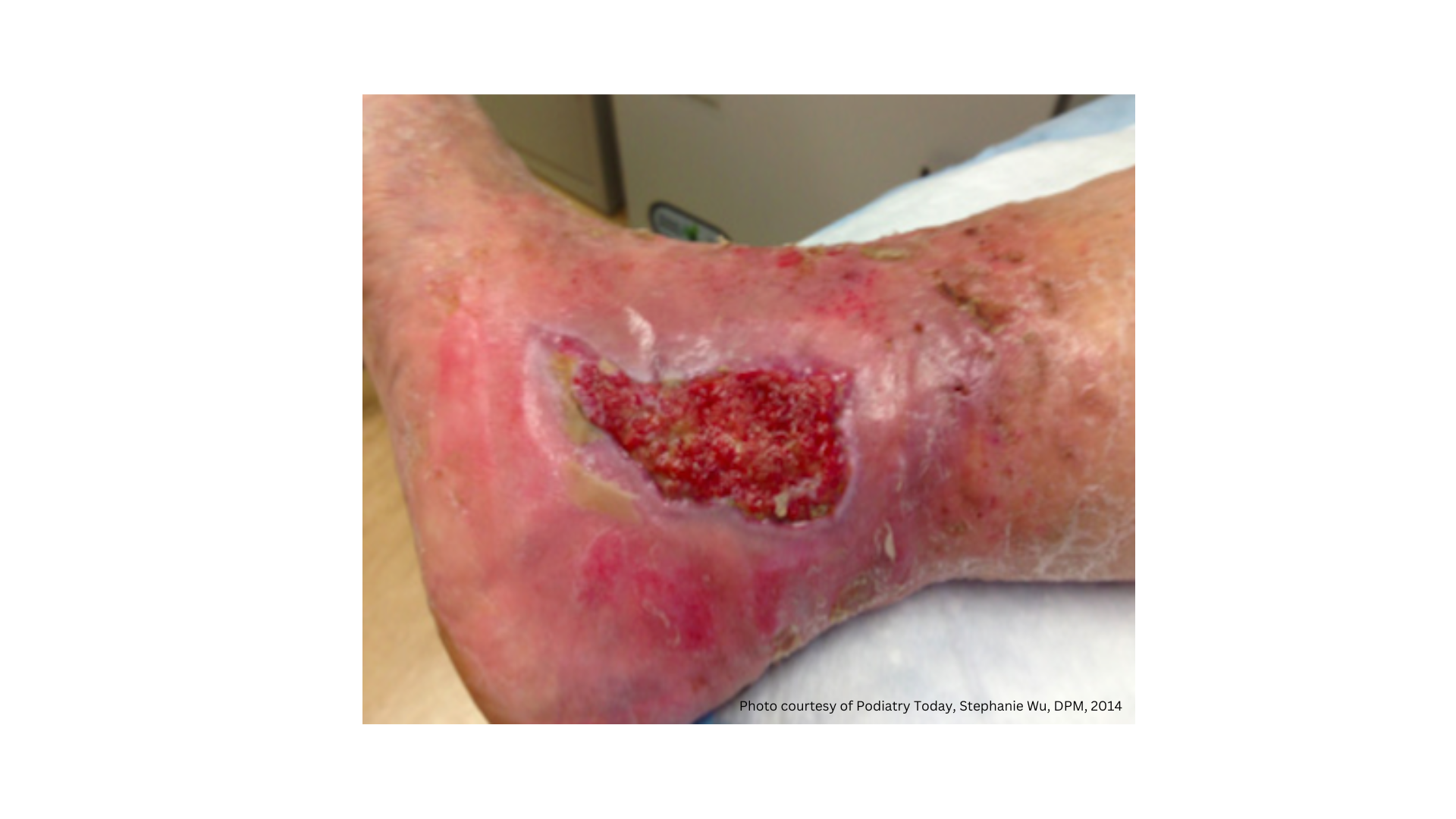Wound Care Diagnostics: A Technology Overview
May 9, 2014
By Laurie Swezey RN, BSN, CWOCN, CWS, FACCWS
Wound care diagnostics includes examination of wounds for the purpose of wound classification. Why does it matter? It matters because treatment varies greatly depending on the type of wound. For example, venous insufficiency ulcers are treated differently than arterial insufficiency ulcers. Failing to differentiate between these wounds could mean the loss of a limb. Let’s take a look at some of the commonly used diagnostics in wound care.
Commonly Used Diagnostics Modalities in Wound Care
Examination- this is perhaps the most important but least appreciated diagnostic tool available to you as a clinician. Wound examination requires you to use all of your senses and your clinical experience and judgement to form an opinion as to the type of wound you might be dealing with and the underlying causative factors at play. Examination involves gathering a thorough history including lifestyle and functional status, medication use, past and current medical problems, past and current wound history and a systems review. Examination allows you to form a working hypothesis as to the type of wound and what factors may have influenced the development of the wound. Following examination, you will use other diagnostic tests to ‘firm up’ your working diagnosis.
Ankle-Brachial Index- an indirect and non-invasive method to evaluate peripheral tissue perfusion; lower values are indicative of increasing severity of CAD (coronary artery disease) and atherosclerosis; the ABI is 99 to 100% specific for diagnosing PAD (peripheral arterial disease). The ABI provides a ratio of the SBP (systolic blood pressure) of the lower extremity in comparison with the upper extremity- a normal ABI measurement is 0.9 to 1.1.
Doppler Ultrasound- when it is difficult to palpate peripheral pulses, you can use Doppler ultrasound to assess arterial patency. The Doppler ultrasound is a hand-held probe that provides you with an audible signal when you place the tip of the probe over moving fluid. Using ultrasound gel over the area where the artery would normally be found, hold the Doppler ultrasound at a 45-degree angle to the skin until you hear a ‘swoosh’- this indicates blood flow. If you cannot find the signal, this indicates lack of perfusion.
Ultrasonography- a non-invasive exam that is 95% specific for diagnosing a deep vein thrombosis (DVT).
Venogram- this is the gold standard for the diagnosis of DVT; however, it is expensive, invasive and poses a risk of anaphylaxis for patients who are allergic to the dye which is injected during the test to highlight abnormalities.
X-Ray- an x-ray may be performed if there is suspicion for the possibility of a foreign object in a wound that may be preventing wound closure or healing; x-rays are not always useful- if there is doubt remaining about whether a foreign object is present, MRI should be considered
MRI- MRI can be used to assess for vascular infarct and necrosis, osteomyelitis, osteochondritis, foreign objects not seen on x-ray, occult fractures, bone dislocation and other problems that may affect wound healing.
Obviously, this list is not exhaustive, but it does include the most commonly used diagnostic modalities currently available. Although you may not use all of these tests in diagnosing wounds, it is important to understand what each test is used for, as well as test limitations and indications.
Sources
Myers, Betsy. (2008). Wound management: Principles and practice. 2nd edition. Pearson Prentice Hall. Upper Saddle River, New Jersey. pg. 41-59.
Diagnostics and wounds: Principles of best practices. World Union of Wound Healing. pg. 2. http://www.woundsinternational.com/pdf/content_29.pdf
Inger, R & Pierre-Jerome, C. (2011). MRI spectrum of bone changes in the diabetic foot. European Journal of Radiology 81(7); pg. 1625-1629. http://www.ejradiology.com/article/S0720-048X%2811%2900455-4/abstract
About The Author
Laurie Swezey RN, BSN, CWOCN, CWS, FACCWS is a Certified Wound Therapist and enterostomal therapist, founder and president of WoundEducators.com, and advocate of incorporating digital and computer technology into the field of wound care.
The views and opinions expressed in this blog are solely those of the author, and do not represent the views of WoundSource, Kestrel Health Information, Inc., its affiliates, or subsidiary companies.
The views and opinions expressed in this content are solely those of the contributor, and do not represent the views of WoundSource, HMP Global, its affiliates, or subsidiary companies.







